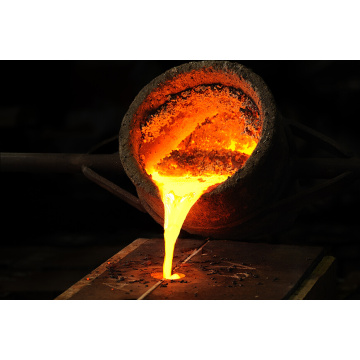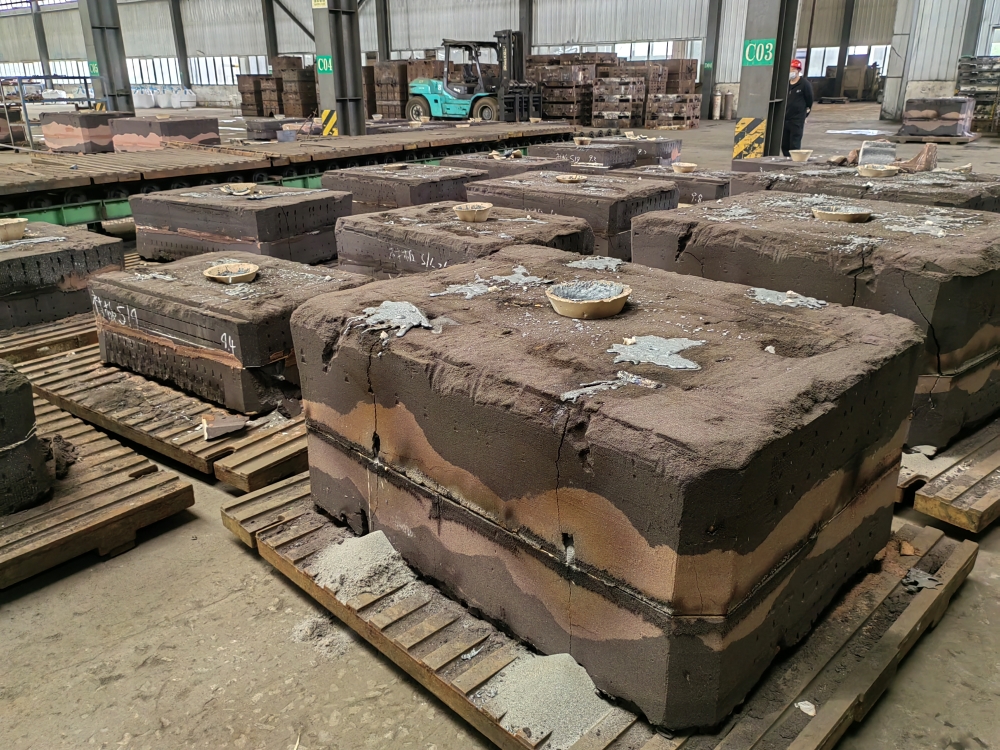
Privacy statement: Your privacy is very important to Us. Our company promises not to disclose your personal information to any external company with out your explicit permission.
![]() April 24, 2024
April 24, 2024

Casting is a pivotal manufacturing process that transforms molten metal into complex hardware components through the use of moulds. Among the various methods utilised today, resin Sand Casting and Green Sand Casting stand out as two of the most prevalent techniques. Each method offers distinct benefits and is suited to specific industrial applications. This article aims to delve into the differences, advantages, and typical applications of each casting process, providing a clear understanding of when and why one may be preferred over the other.
What is Green Sand Casting?
Green sand casting is a traditional casting process that uses green sand moulds. The term "green" refers to the wet state of the sand, not the colour. The sand used in this method is a mixture of silica sand, bentonite clay (as a binder), water, and sometimes additives to enhance the sand's properties. This composition makes the sand malleable and capable of retaining its shape under pressure.
The process involves packing this damp sand around a pattern (the shape of the desired part) placed inside a box, often referred to as a flask. Once the pattern is removed, a cavity remains that exactly matches the shape of the part. Molten metal is then poured into this cavity. Once the metal cools and solidifies, the sand mould is broken apart to release the cast part. The green sand can be reconditioned and reused for new moulds, making it a cost-effective and efficient option for large-scale production.
What is Resin Sand Casting?
Resin sand casting, also known as no-bake sand casting, takes a different approach by using sand coated with a chemical binder, typically a synthetic resin. This resin binds the sand particles together to form a strong mould. Unlike green sand casting, the resin sand does not need to be moist and offers several advantages in terms of strength and mould stability.
The resin sand casting process starts with mixing sand with a resin binder to create the moulding sand. This mixture is then packed into a flask around the pattern. Unlike green sand, which can be used wet, resin sand needs to cure at room temperature or with the aid of an external heat source, solidifying the binder and hardening the mould. Once cured, the pattern is removed, and the mould is ready for the molten metal. After the metal has cooled and solidified, the resin-bonded sand is broken away, usually being discarded as it cannot be reused like green sand.
Resin sand casting is highly valued for its ability to produce precise and complex castings with excellent surface quality and dimensional accuracy. However, it comes at a higher cost due to the use of chemical binders and the need for new sand for each casting, making it suitable for lower volume productions or parts that demand high-quality finishes.
Comparison of Techniques
When comparing resin sand casting and green sand casting, several factors stand out:
· Material Differences: Green sand consists of a mixture of silica sand, water, bentonite clay, and sometimes other additives, which can be easily reconditioned and reused. In contrast, resin sand uses a chemical binder mixed with sand, which after hardening forms a strong but non-reusable mould, leading to increased material costs.
· Mould Reusability: Green sand is notable for its reusability within the casting process, making it cost-efficient and environmentally friendly. Resin sand moulds, however, are typically destroyed during the casting removal process and cannot be reused, adding to the expense and environmental impact.
· Surface Finish and Dimensional Accuracy: Resin sand casting generally provides a superior surface finish and tighter dimensional tolerances compared to green sand casting. This is due to the firmer and more stable mould which resin sand forms, reducing defects like sand blow holes or surface inaccuracies.
· Cost Implications: Green sand casting is more economically viable for larger production runs due to the lower cost of materials and the reusability of the sand. Resin sand casting, while costlier, is preferred for producing high-precision components in smaller quantities or where the greater expense is justified by the need for precision and a high-quality finish.
· Environmental Impact: The green sand casting process has a lower environmental impact, largely because of the absence of chemical binders and the recyclability of the sand. Resin sand casting involves synthetic resins, which can emit volatile organic compounds (VOCs) during the curing and pouring processes, presenting environmental and health concerns.
Advantages of Each Method

Applications
Each casting method finds its niche in specific industrial applications based on its inherent advantages:
Green Sand Casting is extensively used across the automotive, construction, and machine tool industries where large volumes of metal parts are required. Common applications include engine blocks, machine bases, and large piping components. Its adaptability and cost-efficiency make it suitable for standard components in civil engineering and municipal infrastructure, such as manhole covers and large valves.
Resin Sand Casting is preferred in industries where precision is crucial, such as aerospace, defence, and specialty engineering. Applications include aerospace engine components, intricate gear housings, Machinery Parts, and complex pump assemblies that require excellent surface finish and high-dimensional accuracy. It is also commonly used for artistic sculptures and other aesthetic applications where detail and finish are paramount.
In conclusion, both green sand casting and resin sand casting offer distinct benefits and serve different needs within the casting industry. The choice between the two methods depends largely on the specific requirements of the project, including the desired quality, production volume, and cost considerations.
The above is the Resin Sand Casting vs. Green Sand Casting: Understanding the Differences and Applications we have listed for you. You can submit the following form to obtain more industry information we provide for you.
You can visit our website or contact us, and we will provide the latest consultation and solutions
Send Inquiry
Most Popular
lastest New
Send Inquiry

Privacy statement: Your privacy is very important to Us. Our company promises not to disclose your personal information to any external company with out your explicit permission.

Fill in more information so that we can get in touch with you faster
Privacy statement: Your privacy is very important to Us. Our company promises not to disclose your personal information to any external company with out your explicit permission.